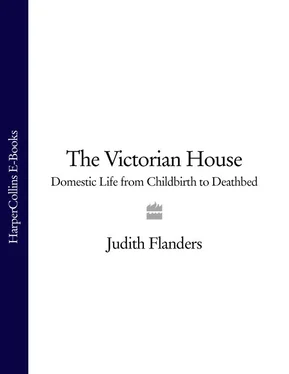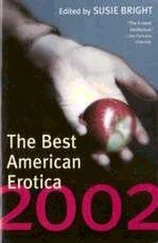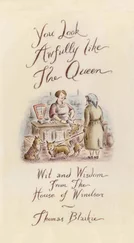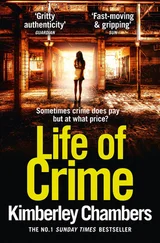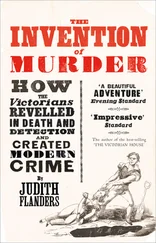The only way to get rid of these creatures was to stop all holes with cement, replace old, crumbling mortar with more cement, use carbolic acid in the scrubbing water when cleaning, and pour more carbolic through cracks in the floor every day. Mrs Haweis did not object to rats and mice, which she thought were ‘nice, pretty, clever little things … They … are our friends, acting as scavengers, and are to me in no wise repugnant.’ 32 For those who did not agree, traps were recommended, plus a hungry cat. Cassell’s Household Guide thought traps superior to arsenic, as the poisoned mice made a terrible smell if they died under the flooring or behind the skirting. (As an afterthought the author worried that children or animals might get at the arsenic, but this was very much secondary to the smell, which was thought to bring disease.) 33 Our Homes suggested keeping a hedgehog to eat the insects; others were scornful of this – the amount a hedgehog ate could not begin to affect the living carpet that Beatrix Potter’s servants found at her grandmother’s house when they visited in the summer of 1886: the first night they were there, the maids had to sit on the kitchen table, as the floor heaved with cockroaches. 34
The war against vermin was fought for three reasons: hygiene, status and (contingent on status) morality. Health reformers battled to convey the new information that cleanliness foiled disease. In addition, the rise of mass production gave many access to objects that only a few could have acquired earlier. Therefore the status markers moved on from the now less-expensive accumulation of possessions to another, more expensive and time-consuming, preoccupation: keeping clean. Respectability was signalled by many flourishes that did not make the house any cleaner, but indicated that here was a decent household. George Godwin, an architect, editor of The Builder magazine, and promoter of sanitary housing for the poor, stressed that ‘the health and morals of the people are regulated by their dwellings’: 35 decent houses produced decent people, not the other way around. He was not alone in this belief. Dr Southwood Smith, in Recreations of a Country Parson (1861), had no doubt that
A clean, fresh, and well-ordered house exercises over its inmates a moral, no less than a physical influence, and has a direct tendency to make the members of the family sober, peaceable, and considerate of the feelings and happiness of each other; nor is it difficult to trace a connexion between habitual feelings of this sort and the formation of habits of respect for property, for the laws in general, and even for those higher duties and obligations the observance of which no laws can enforce. 36
Expressions that reflected this idea became commonplace. It was John Wesley, the founder of Methodism, who first said that ‘Cleanliness is next to Godliness’: an idea that before the nineteenth century would simply have made no sense. Good Methodists, and soon the general population, had a moral as well as physical duty to clean their houses. Thus tasks like blackleading the grates and whitening the front steps, which made the grates and the steps no cleaner than they had been before, were important in that they were time-consuming, had to be repeated daily, and therefore indicated that the householders were serious in their commitment. Front steps had to be rewhitened every morning. Whiting was made up of size, ‘stone blue’ (a bleaching agent), whitening and pipeclay. The stones were swept, scrubbed with water, and then covered with this mixture. When it was dry they were rubbed with a flannel and brushed. In later years a hearthstone or donkey stone – a piece of weathered sandstone – could be used instead of the whiting; it was rubbed over the step, and did not need buffing afterwards. The whiting was highly impermanent: once walked on, the steps were marked until they were whitened again the next day. But a ‘good’ neighbourhood was one where ‘each house you passed had its half-circle of white pavement and its white-scrubbed doorstep’. In many parts of Britain doorsteps were whitened daily well into the 1960s. 37 Mrs Haweis noted that ‘If an old house has been lived in by respectable and careful people, it is not uncommon to find it … actually free from a single blackbeetle!’ 38 Careful people who were not respectable, it was clear, would have had blackbeetles.
The link between morality and housekeeping was made time after time. Carlyle, coming from a poor farming background, thought his future mother-in-law’s drawing room was the finest room he had ever seen: ‘Clean, all of it, as spring water; solid and correct’. 39 The same conflation of cleanliness and virtue could not have been put more clearly than by the old-fashioned newly married man in Gissing’s The Odd Women : he thought that his wife’s ‘care of the house was all that reason could desire. In her behaviour he had never detected the slightest impropriety. He believed her chaste as any woman living.’ 40 And Dickens, as usual, both adhered to and mocked the prevailing notion. In Our Mutual Friend (1864–5), Eugene Wrayburn and Mortimer Lighthouse, two bachelors, take chambers together. Eugene insists on their having a ‘very complete little kitchen’, where
the moral influence is the important thing … See! … miniature flour barrel, rolling-pin, spice box, shelf of brown jars, chopping-board, coffee-mill, dresser elegantly furnished with crockery, saucepans and pans, roasting jack, a charming kettle, an armoury of dish-covers. The moral influence of these objects, in forming the domestic virtues, may have an immense influence upon me … In fact, I have an idea that I feel the domestic virtues already forming … 41
In the 1851 census, just over a quarter of a million men were of the professional ranks – doctors, barristers and solicitors, and so on. Twenty years later the number had trebled, to more than 800,000. Professionalization, a set of skills to be mastered, was not confined to the outside world: women were expected to acquire the necessary skills to be good managers, administrators, organizers in their own realm. Mrs Beeton put it most famously in the opening sentence of Household Management (1861): ‘As with the COMMANDER OF AN ARMY, or the leader of any enterprise, so it is with the mistress of the house.’ 42 Shirley Forster Murphy, in Our Homes twenty years later, used a similarly martial image:
If once we commence a war against dirt, we can never lay down our arms and say, ‘now the enemy is conquered.’ … Women – mistresses of households, domestic servants – are the soldiers who are deputed by society to engage in this war against dirt … As in a campaign each officer is told off to a particular duty, let each servant in a house, and each member of the family who can take a part understand clearly what is the duty for which she is responsible. 43
(Note how part of respectability was in allocating each person a separate task, instead of one person performing a multiplicity of roles.)
The mistress of the house was advised to be businesslike:
it will be found a good plan to write down the daily work of each servant in a little book that can hang in her cupboard, and the hours for doing it, as well as the days on which extra cleaning is required. The hours of rising, meals, dressing, shutting up, going to bed, and all matters relating to comfort and order, should also be inscribed in the book, with existent rules, concerning ‘followers’, Sundays out, times for returning, the lists of silver, china, linen, pots and pans, or whatever goods are entrusted to her, the sweep’s days, the dustman’s days, &c., &c. 44
Pre-printed account books were sold to simplify the requisite noting of all household expenditure. Their headings and columns for butcher, baker, rent, wages etc. mimicked office ledgers. This was in addition to each of the tradesman’s own books: the housewife wrote her order in the book she kept for each separate supplier when he came to take her daily or weekly order. The tradesman took the book away, filled in the prices, and brought it back with her delivery later in the day. The good housewife then transferred these prices to her own ledger, and every week or month reconciled all the figures. It was, said the journal Publisher’s Weekly , ‘an age of selections and collections, of abstracts and compilations, of anthologies and genealogies, indexes, catalogues, bibliographies, and local histories’. 45
Читать дальше
